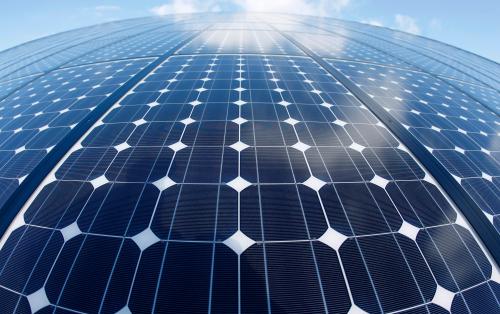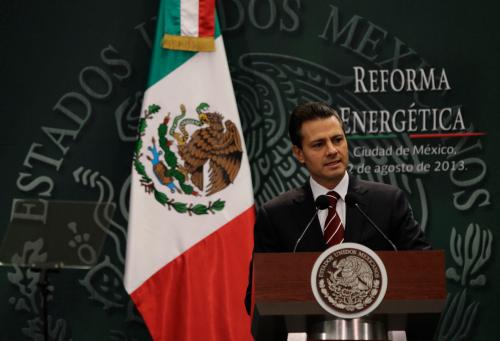Content from the Brookings Institution India Center is now archived. After seven years of an impactful partnership, as of September 11, 2020, Brookings India is now the Centre for Social and Economic Progress, an independent public policy institution based in India.
This paper is part of a series from the Cross-Brookings Initiative on Energy and Climate. The paper’s executive summary follows. View the full series here.
Executive summary
Coal provides about half of India’s commercial primary energy supply today and is the dominant fuel for power production in India. In 2014, Prime Minister Narendra Modi established ambitious goals for renewable energy (RE) development, aiming to quadruple its capacity by 2022. Despite expected growth in RE, we project that coal will remain the dominant fuel for electricity generation in India through 2030 and beyond, even though its share of generation will fall.1 Although coal will continue to dominate power supply, the coal industry in India faces significant challenges and upcoming change.
Coal India Limited (CIL) is the world’s largest coal mining company and produces 84 percent of India’s thermal coal.2 Most coal is sold to power producers, predominantly under fuel supply agreements, at administered prices. But, for years, CIL has not kept up with growing demand. The Indian government now allows end-users to produce their own coal and is moving toward allowing more private-sector mining. However, these changes do not address the underlying challenges of increasing domestic coal production—primarily, obtaining the necessary land and permits to expand production. India also imports coal, which is particularly used in coastal areas far from the coal mines of India’s east.
The coal industry is knit into the fabric of the Indian economy. The central government owns a little over 75 percent of CIL,3 which provides significant revenue to the national treasury through dividend payments. CIL is also a major employer, and, in many parts of India, the largest one. Levies on coal are an important source of revenue for the central government and especially for coal-producing states, among the poorest in the nation. Finally, Indian Railways’ freight charges for coal subsidize passenger transport, and coal provides 44 percent of freight revenues, despite being only 40 percent of total freight tonne-kilometers. 4 For power plants located far from mines, transport can be the largest component of the delivered coal price.
India needs both coal and renewable energy to meet its growing power needs, but the structure of the Indian power industry raises challenges for the complementary growth of these two technologies.
In the last few years, India has moved from chronic power shortfalls to a situation of near surplus in power generation capacity. Growth in coal-fired power generation capacity has outstripped demand growth over the last several years. At the same time, the growing supply of RE is beginning to displace coal-fired generation in an opportunistic manner (when it is available), decreasing the load factors of some coal-fired plants and therefore decreasing their profitability. Coal plants already make up a significant category of financially distressed assets for the Indian banking sector. The most competitive coal plants in the future will be newer, more efficient plants, and those that can efficiently decrease production to accommodate variable RE generation. Plants located close to mines also have a clear advantage with respect to coal transportation costs. Older plants that require extensive upgrades to meet environmental rules or rules requiring generation flexibility will be less competitive.
India needs both coal and RE to meet its growing power needs, but the structure of the Indian power industry raises challenges for the complementary growth of these two technologies. State-level power distribution companies (DisComs) generally buy power from generators through power purchase agreements (PPAs)—static and rigid contracts that treat all power the same, regardless of whether it is intermittent or dispatchable, or by the time of day of availability. Competitive power markets with market-based fuel prices and time-of-day wholesale prices would send the right signals for developing new power sources, unlike the rigid PPAs in place today. However, the DisComs are nearly bankrupt, and, on average, lose money on every kilowatt-hour (kWh) sold, complicating the establishment of a competitive market. “Fixing” India’s coal system is nearly impossible without addressing distortions across the entire value chain that spans coal mining, railways, power generators, and DisComs. Distortions also exist at the retail level, where commercial and industrial customers pay higher rates to subsidize other electricity consumers. Customers paying higher rates are those most likely to shift to RE self-generation, robbing the DisComs of their best customers.
Coal faces headwinds globally and there are two main types of opposition to coal. First is the concern over coal’s externalities, both local pollution and greenhouse gas emissions with global consequences. Second is the belief that India doesn’t need as much coal, as renewables now provide a cheaper alternative, and coal represents a risky and expensive investment.
Both forms of opposition rely on renewable energy as the alternative, but there are subtle differences. For the latter, the alternative just happens to be renewables; it could be any cheaper and available source. For example, natural gas is displacing coal in the United States. For the former, the framing is that is a country should be willing to pay more for cleaner power. If decisionmakers properly priced externalities, then the economics would favor alternatives to coal. However, in India, like in many emerging economies, development needs have often been paramount over environmental concerns.
Although coal use is growing, India is on track to meet its commitments under the Paris Agreement. Nonetheless, high RE targets have a lower impact on emissions than capacity numbers suggest, because baseload coal operates at about three times the capacity utilization of RE. Achieving deep decarbonization of India’s energy mix will take time, and may require a combination of storage technologies, a more flexible and smarter grid, and efforts beyond the electricity sector.
In the meantime, India is focused on bringing electricity to 100 percent of homes, providing affordable power, and making utilities financially viable. The environment is also important, but climate change is not the main driver. Local air pollution is a more urgent issue, and upcoming stringent environmental norms may force some older and dirtier plants to shut down. Despite RE’s visibility and ascent, cleaning up coal, including through more efficient plants, is a more realistic goal than wishing it away.
-
Footnotes
- Rahul Tongia and Samantha Gross, “The Politics and Economics of India’s Turn to Renewable Power,” The Brookings Institution, September 4, 2018, https://www.brookings.edu/research/working-to-turn-ambition-into-reality/.
- India Coal Controller Organization, “Provisional Coal Statistics 2016-2017,” Ministry of Coal, October 2017, http://www.coalcontroller.gov.in/writereaddata/files/download/provisionalcoalstat/ProvisionalCoalStat2016-17.pdf. Thermal coal is distinct from coking or metallurgical coal, which is used by the steel industry. Coking coal is a small fraction of the total coal consumed in India, and a lower fraction of domestic production.
- Coal India Limited, “Annual Report and Accounts 2017-2018,” May 29, 2018, https://www.coalindia.in/DesktopModules/DocumentList/documents/Annual%20Report201718.pdf. Corporate law mandates the government share be at most 75 percent, for which a stock operation is underway at time of writing.
- Puneet Kamboj and Rahul Tongia, “Indian Railways and Coal: An Unsustainable Interdependency,” The Brookings Institution, July 17, 2018, https://www.brookings.edu/research/indian-railways-and-coal/.
The Brookings Institution is committed to quality, independence, and impact.
We are supported by a diverse array of funders. In line with our values and policies, each Brookings publication represents the sole views of its author(s).








